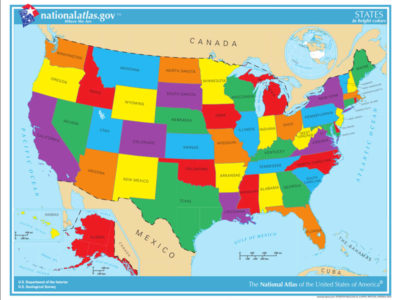The Emperor’s New Endangerment Theory (Part II)
To justify a decision not to regulate CO2 from power plants, EPA had to twist statutory language beyond all recognition.
According to EPA, carbon emissions from the U.S. power sector are too insignificant to warrant regulation. This is a bizarre conclusion: U.S. power sector’s emissions are around 6.5 billion tons, just below Russia’s total emissions from all sectors. Before making this “insignificance” finding, EPA first had to offer a novel reading of the Clean Air Act (CAA). EPA says that before it could properly regulate those emissions, it would first have to make a formal finding that they “cause or significantly contribute” to climate change. One key problem, however, is that the statute doesn’t say that.
I discussed some of the basic flaws in EPA’s theories in a previous post. Today, I’ll take a closer look at why the proposed new reading of the statute is untenable.
Background
EPA issued climate regulations for power plants under Presidents Obama and Biden, and even in the first Trump Administration. These efforts were based on section 111 of the Clean Air Act.
There are two relevant provisions. The first is the listing provision, which is the basis for EPA’s primary argument. The listing provision required EPA to issue a list of categories of pollution sources within 90 days of the law’s passage. A category like power plants gets listed if “it causes, or contributes significantly to air pollution which may reasonably be anticipated to endanger public health or welfare.” Power plants were put on this list in 1971.
The second provision requires EPA to issue regulations for the sources on the list. Those regulations incorporate a “federal standard of performance” on new facilities in the relevant category. EPA must propose such standards within a year of the listing decision but can revise them later. The standards of performance are based on a variety of considerations, including cost.
Note that only the listing provision includes a reference to significance. The other provision does not.
The Obama and Biden regulations under § 111 explained why it was important to regulate CO2 from power plants but did not make specific findings under the “cause or contribute significantly” standard. In 2021, the Trump Administration argued that a finding of significance was required and went ahead to make one. It found the power sector’s emissions to be significant because they were more than 3% of U.S. carbon emissions. The Trump Administration’s current position, however, is that the emissions of a U.S. sector must be compared with global carbon emissions rather than domestic ones.
EPA’s Primary Statutory Argument
EPA’s primary argument is the one I mentioned in the opening paragraph. EPA also has a fallback version of the argument, which is somewhat more tenable but would have less of a long-term effect on EPA’s regulatory authority.
EPA’s main argument is that EPA can only regulate a pollutant under § 111 after it has made a finding that the emission sources in question significantly contribute to harmful pollution. The biggest flaw in EPA’s current interpretation of the statute is that it just doesn’t fit the statutory language.
When it passed the CAA, Congress could have — but did not — require EPA to include references to specific industry pollutants on the list of categories of industry to regulate. Congress could have — but did not — restrict EPA to regulating only the specific pollutants that it had discussed when making a listing decision. Congress could have — but did not — combine the two provisions into a unified procedure, requiring an endangerment finding whenever a new pollution control regulation is adopted. Congress didn’t do any of those things.
Instead, Congress separated the listing stage and the regulation stage, setting completely different requirements for each one. EPA considers endangerment for individual pollutants, but only as a prelude to constructing a list of industries that doesn’t mention any specific pollutants. It then regulates emissions from industries on the list based on factors that don’t include “significance of harm” as a specific requirement. EPA is ignoring the statute that Congress wrote in favor of one it wishes Congress had written.
Apart from its inconsistency with the most relevant statutory language, EPA’s current reading of the statute would throw many previous § 111 regulations into doubt. To put it another way, the new approach isn’t just a shift in how the agency thinks about greenhouse gases. It is a fundamental shift in how the agency has approached pollution from new facilities for decades.
To get around the fact that the list itself doesn’t refer to specific pollutants, EPA tries to fill that gap with the published explanations for adding an industry to the original 1971 list. Those explanations would presumably have included discussions of at least some of the industry’s pollutants and their effects. To see how this would work, consider one power plant pollutant, sulfur dioxide (SO2). if the explanation for listing power plants discussed SO2, EPA could later regulate SO2 from power plants without making an explicit endangerment finding. Conveniently for the Trump EPA, this wouldn’t work for greenhouse gases, because climate change was just emerging as an issue back then.
In sum, EPA claims it needs an industry-specific endangerment finding before it can regulate emissions of a pollutant. This requirement is purportedly satisfied if EPA mentioned a pollutant when it was explaining its decision to list an industry. Otherwise, EPA would have to make a new endangerment finding covering that pollutant and that industry. That’s something EPA hasn’t done in the past, so EPA is relying on the first requirement to avoid placing dozens of existing regulations of conventional air pollutants in doubt.
There are several reasons this argument doesn’t work. First, it would be very odd for Congress to key EPA’s regulatory power to the legislative history of a prior regulation — a discussion that EPA published but not as part of the prior regulation itself. You would think Congress would say if it wanted to give binding legal effect to explanatory material by EPA that didn’t appear in an actual agency rule.
Another problem is that EPA’s proposed approach to determining significance (whether a source contributed more than 3% to global emissionms) wasn’t used by EPA in making decades-old listing decisions. So those listing decisions might no longer be valid under the newer standard now proposed by EPA.
An even bigger problem is that EPA’s 1971 listing decisionforo power plants is now over fifty years old. How could we possibly know, based on the significance of industry emissions of a pollutant back then whether it remains significant today? But if we can’t just rely on the risk discussion in the old listing decision, we’re backed into questioning the validity of most of EPA’s later section 111 regulations. That seems untenable.
The bottom line is that EPA’s current approach might throw into doubt many existing agency regulations of conventional pollutants. Simply reverting to the pre-decisional 1971 discussions of industry-specific pollution risks is at best an incomplete solution. This highlights the radical nature of EPA’s new policy.
These problems might not be fatal in themselves. But combined with the gymnastics needed to find any basis for EPA’s significance requirement in the statutory language, they make EPA’s main theory of the statute hard to buy.
EPA’s Fallback Theory
EPA’s fallback theory is that it has wide discretion whether to regulate a particular pollutant emitted by a listed industry and can base that decision on whether the pollutant now causes significant harm. The assertion that EPA has at least some discretion is consistent with prior EPA practice and with the statutory language.
This reading of the statute, however, would do only part of the work that the Administration wants. Even if it justified a discretionary decision to refrain from currently regulating the industry’s carbon emissions, it wouldn’t stop a new Administration from exercising its discretion differently and issuing new § 111 regulations of carbon emissions. Also, although EPA’s exercise of discretion gets judicial deference, it still must provide a reasoned basis for its decision. As I explain in my next post, its proposed approach to significance fails that test.
Moreover, EPA wants to equate its discretion over whether to regulate with the specific finding of “significant contribution.” EPA then closes the loops by arguing that “significant contribution” is itself based on a long list of discretionary policy considerations, rather than just a determination of the magnitude of possible harm caused by an industry’s pollution. This highly policy-driven approach to significance is hard to square with the statute.
All of this brings us to the subject of the next blog post: a closer look at how EPA is proposing to define “significant contribution” to rule out carbon emissions from power plants.







Reader Comments